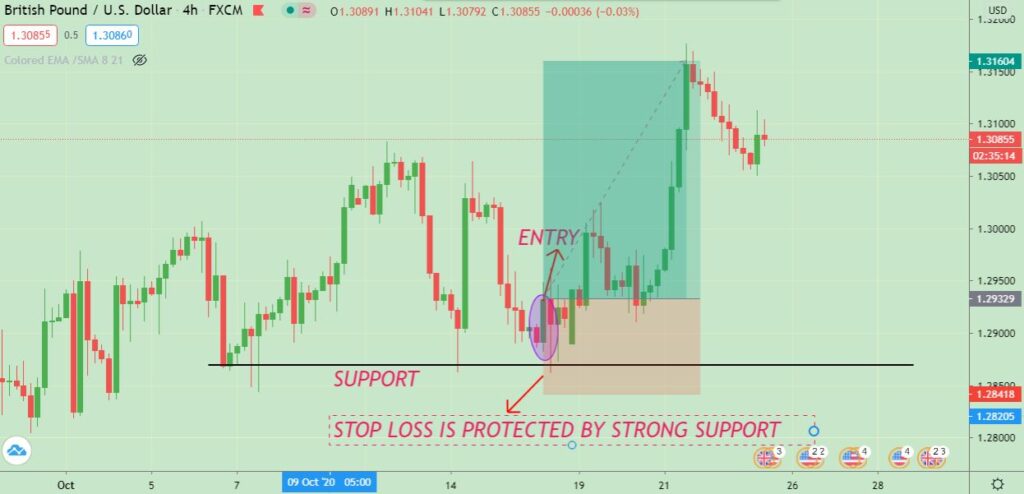Protect Your Profits with Precision: Stop Loss in Forex Trading
Navigating the dynamic waters of the foreign exchange market demands meticulous risk management, and one vital tool in this arsenal is the stop loss. It acts as an automated safety net, safeguarding your hard-earned profits by limiting potential losses. Join us as we delve into the world of stop loss, unraveling its significance, exploring its intricacies, and equipping you with expert strategies to outsmart market volatility.

Image: zandtraders.com
Understanding Stop Loss: A Guardian Against Adverse Tides
A stop loss order is an instruction placed with your broker to automatically sell a currency pair when it reaches a predetermined price level. This level is strategically set below your entry point, creating a protective barrier against adverse market movements. When triggered, the order executes, limiting your losses to the predefined amount. By incorporating stop loss into your trading strategy, you insulate yourself from the unpredictable nature of the forex market, preventing emotional decision-making and safeguarding your capital.
History and Significance of Stop Loss
The concept of stop loss has been prevalent since the early days of financial trading. Historically, traders relied on handwritten notes to communicate stop loss levels to their brokers, ensuring timely execution in the absence of electronic trading platforms. Today, stop loss has become an indispensable risk management tool, widely employed by professional traders and novice investors alike, ensuring protection against severe market fluctuations and promoting disciplined trading.
Types of Stop Loss Orders
The forex market offers a range of stop loss order types, each tailored to specific trading strategies. Some common types include:
- Market Stop: Executes immediately at the prevailing market price, regardless of its deviation from the stop loss level.
- Limit Stop: Sells or buys the currency pair at a predefined price that is either equal to or better than the stop loss level.
- Trailing Stop: A dynamic stop loss that adjusts its level according to the market’s price action, following the trend and safeguarding profits.

Image: honeypips.com
Expert Insights: Stop Loss Strategies for Success
Seasoned traders have honed their stop loss techniques over countless market cycles. Here’s a collection of expert tips to elevate your trading performance:
- Placement is Paramount: Position your stop loss wisely, considering both technical indicators and market volatility. Ideal placement strikes a balance between protecting profits and allowing for reasonable price fluctuations.
- Match to Your Strategy: Select the stop loss type that aligns with your risk tolerance and trading style. There’s no one-size-fits-all approach.
- Respect the Market: Avoid placing stop loss orders too tightly, as excessive caution can hinder your ability to capitalize on favorable price movements.
Additional Tips for Effective Stop Loss Usage
Enhance your stop loss proficiency with these additional tips:
- Practice on Demo: Test and refine your stop loss strategies using a demo account before implementing them in live trading.
- Manage Risk: Use stop loss in conjunction with other risk management tools, such as position sizing and leverage control.
- Choose a Reliable Broker: Select a broker that provides stable trade execution, ensuring your stop loss orders are executed promptly.
Stop Loss In Forex Trading
FAQs: Demystifying Stop Loss
- Q: What happens when a stop loss order is triggered?
A: When a stop loss level is reached, the order automatically executes, selling or buying the currency pair at the prevailing market price.
- Q: Can stop loss orders guarantee profit?
A: No, stop loss orders do not guarantee profit. They limit potential losses, but they cannot prevent them entirely.
- Q: Do all traders use stop loss?
A: While highly recommended, not all traders use stop loss orders. Some may rely on other risk management techniques or assume a higher tolerance for risk.
- Q: Are there any downsides to using stop loss?
A: Yes, one potential downside is the premature closure of positions, which can occur if stop loss levels are set too tightly.
- Q: Can I modify a stop loss order?
A: Yes, most brokers allow you to modify stop loss levels before






